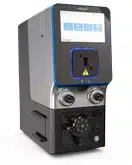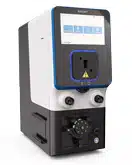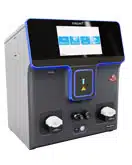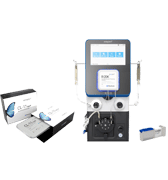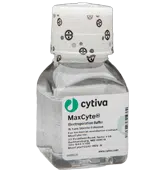Rethinking Partnerships in Cell & Gene Therapy—How MaxCyte’s Business Model Drives Real Results

In the fast-moving world of cell and gene therapy (CGT), technology alone isn’t enough. We sat down with Sean Menarguez, Senior Director of Business Development at MaxCyte, to discuss how the company’s unique partnership model is helping developers accelerate progress, reduce risk, and bring transformative therapies to market faster.
Let’s start with the big picture—what makes MaxCyte different in the CGT space?
Sean:
At our core, we’re not just a technology provider, we’re a true partner. We take a collaborative approach of aligning technology and services into optimizing scalable cell engineering processes – accelerating development is more than just access to a technology. Our entire business model is designed to align with our partners’ success from early development through commercialization.
That means we don’t just offer cell engineering platforms, we provide a framework for scalability, global regulatory support, and on-site technical expertise. And importantly, our Strategic Platform License (SPL) makes all of that accessible in a way that’s financially aligned with the developer’s journey.
Q: What does that look like in practice for a CGT developer?
Sean:
It starts with access to deep expertise, but more importantly, it’s about continuity. When a CGT developer chooses MaxCyte, they’re not just getting a tool, they’re getting a team and a system that scales with them.
For example, we support many of our partners starting at their preclinical concept stage. Working with us, they gain access to leading technology, scientific support and regulatory guidance that streamlines the entire development process. That’s one of the key differentiators—our partners aren’t figuring this out alone. They’re leveraging our 25+ years of experience and the lessons we’ve learned across more than 70 clinical programs.
Q: You mentioned the Strategic Platform License. Can you explain how that’s different from a traditional licensing model?
Sean:
Traditional licenses tend to be rigid: large upfront fees, fixed timelines, and little flexibility. Our SPL license program takes a unique approach as its focused-on ensuring alignment meaning developers only move into licensing when they’re ready for clinical work. Our SPL program minimizes the early economic burden with no upfront cost and a sustainable business model that monetizes our platform offering and service over the course of aligned clinical value-generating events that best fit the therapeutic product development journey.
That structure allows us to provide deep support early—without burdening the partner—and then scale our involvement as the therapy progresses through clinical and commercial phases. The SPL gives access to our global regulatory files, on-site technical and scientific support, GMP process development, tech transfer guidance, and commercial readiness; all baked into the agreement.
Q: One of MaxCyte’s messages is “Start with the end in mind.” What does that mean in this context?
Sean:
It means building a process today that will alleviate headaches tomorrow. We’ve seen so many developers get stuck reworking their process at scale-up or scrambling to align with regulatory expectations late in the game. That burns time and capital – the two variables essential to development.
With MaxCyte, our partners start with GMP-ready process from the get-go. That helps them design a scalable, reproducible process from day one. Whether it’s optimizing for efficiency, ensuring comparability, or preparing for CDMO transfer, our goal is to eliminate those downstream surprises by addressing them early.
Q: How has the business model enabled real-world results for your partners?
Sean:
The impact is tangible. We've had partners cut 6–12 months off their development timelines—that is critical when you’re trying to hit key funding milestones or be first to market. In financial terms, that can translate into $3M to $12M in saved costs and increased enterprise value.
We’ve supported partners in stealth mode, with no internal PD capacity, and helped them go from preclinical to IND-ready in under three months. In one case, our platform and support enabled a startup to secure $15M in funding while navigating tech transfers across CDMOs during the pandemic. That’s the power of a true partnership—one built on a model that’s designed to deliver results, not just sell equipment.
Q: Final thoughts — what should CGT developers be asking as they evaluate technology partners?
Sean:
I’d recommend evaluating technology not just for how it performs today, but for how it will scale with your program—through clinical development, manufacturing expansion, and evolving regulatory requirements. We’ve heard from many therapeutic developers how challenging it is to maintain consistency across sites, standardize CMC, and align with evolving requirements. That’s why the MaxCyte platform stands apart. It’s been used from preclinical proof-of-concept to full commercial manufacturing—the epitome of a therapeutic platform built for long-term success.
Across our industry, we continue to face significant challenges in manufacturing scalability, CMC standardization, and global regulatory alignment. To overcome these hurdles for therapeutics developers, leveraging collaboration capabilities from service and technology providers is critical to drive the next phase of growth in cell and gene therapy. At MaxCyte, we’ve built a business around just that: cell engineering cross-collaboration to accelerate cell and gene therapies development not just in the early phases, but when the stakes are highest. Our success is measured by your success. And we’ve structured everything—our team, our tech, and our license—to reflect that.
